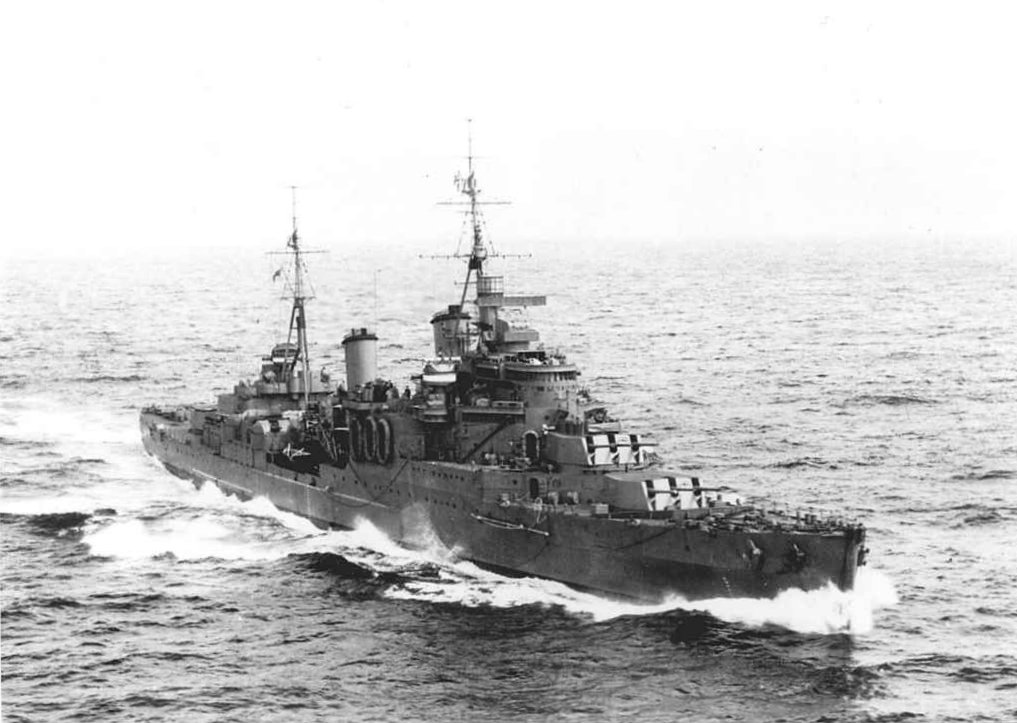
The HMS Manchester (Pennant number C15) was a Town-class light cruiser, like Gloucester, the Royal Navy. It was set in the yards of Hawthorn Leslie Hebburn in March 1936, launched in April of the following year, and entered service on August 4, 1938. He had a relatively short career but was very active during the Second World War.
Service 1939 - 1940
Following are the services.
At the outbreak of the war, Manchester was serving in the East Indies with the Fourth Cruiser Squadron but was immediately recalled to his homeland, where he arrived on 25 November 1939 - then served in the Home Fleet based at Scapa Flow, with patrol duties in the North Sea. During one of these missions, on February 21, 1940, captured the German merchant WaHehe. Then, he participated in the operations of the Countryside of Norway, during which he obtained his first Battle Honour.
It was later transferred to the estuary of the ‘Humber with anti-invasion duties until September 15, when it was detached in the Mediterranean to participate in’ Operation Collar, a fast convoy bound for Malta and Alexandria. On 27 November of that year, he participated in the Battle of Cape Teulada without receiving damage. On December 13, the Manchester was back at home, where he spent the first four months of the following year in the pipeline for a riaddobbo.
Service 1941 - 1942
During the sortie of Bismarck, in the second half of May, patrolled the Straits of Denmark. The following July, he returned to the Mediterranean to escort a major convoy to Malta. Still, on July 23, he was hit on the starboard side by a torpedo from an enemy aircraft and severely damaged. Temporary repairs were undertaken in Gibraltar, which was later moved to Philadelphia for the final restorations.
The work was completed on February 27, 1942, after which he returned to Portsmouth, where the last repairs were met by the end of April. To return to service in the Home Fleet was framed in the first week of May, then escorted a convoy Arctic direct in the Soviet Union and participated in the reinforcement of the island of Spitsbergen. In August, he was reassigned to the Mediterranean.
Then he took part in Operation Pedestal, which had as its objective to supply Malta, under siege by the Axis forces and subjected to constant bombing. The battle that followed, remembered as the Battle of Mid-August, caused several significant losses to the British troops, including the loss of the aircraft carrier Eagle.
During the operation, 13 August, the Manchester was torpedoed by torpedo boats MS 16 and MS 22, being severely damaged. The ship was scuttled, and it is impossible to repair or tow it to port.
Its commander, Captain Harold Drew, was referred to the Court Martial, as the Admiralty believed that the ship could be saved and was able to reach a neutral port. The captain was found guilty, his work was censored, and he was expelled from the service. It was a very controversial decision, as the Manchester right now auto affodamento was severely damaged, and Captain Drew feared that it could fall into enemy hands together with all its radar equipment.
Some of the sailors were rescued later by Allied ships, while others were captured and held prisoner by the Vichy French in Tunisia. During his short career, Manchester received four Battle Honours.